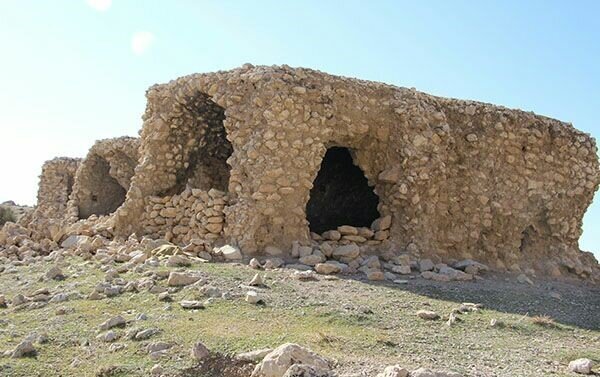Sassanid temple in southern Iran needs urgent restoration, cultural heritage devotee says

TEHRAN – Siavash Aria, who is a cultural heritage devotee and expert, has raised an urgent plea for the restoration of the ancient Chahar-Taq of Kohnaru, a revered Sassanid-era ruined temple situated in southern Iran.
Aria, showcasing images depicting the current state of the Chahar-Taq, emphasized its deteriorating condition, ISNA reported on Monday.
Describing the temple as one of the most significant and valuable examples of Sassanid Chahar-Taqs in the southern regions of Iran, he lamented its neglect for over a decade.
Located in Firuzabad county of Fars province, the structure has suffered extensive decay with crumbling materials, deep cracks under the influence of wild vegetation and weeds, causing degradation and erosion of this Sassanian heritage.
Natural elements such as rain, sun, wind, and the passage of time have further contributed to the accelerated decay and ruin of the temple, Aria said.
He also highlighted that the [current] utilization of the Chahar-Taq for housing the livestock of nomadic shepherds has exacerbated the damages. “The presence of sheep droppings scattered within the temple precincts has added to its deterioration, prompting a sense of distress upon witnessing this situation.”
Expressing disappointment over the lack of concerted efforts for the preservation of this historically significant structure, Aria, based on a decade of field observations, urged immediate action to safeguard this invaluable historical asset.
The cultural activist further pointed out evidence of treasure hunters' presence within the temple's vicinity, resulting in extensive damage by digging large and deep trenches.
Aria passionately appealed for urgent restoration and protective measures to be taken quickly to rescue the Chahar-Taq from its current state of looming total destruction.
The plea comes as a dire call to action, urging responsible authorities and relevant bodies to take immediate steps towards the preservation and restoration of this iconic Sassanid-era architectural marvel before irreparable harm occurs.
Technically speaking, the monument is in the form of Chahar-Taq, which is an ancient square-shaped brick room surmounted by a domed roof.
According to UNESCO, the architecture of the Sassanid monuments on the property further illustrates early examples of construction of domes with squinches on square spaces, such as in the Chahar-Taq (Chahartaq) buildings, where the four sides of the square room show arched openings: this architectural form turned into the most typical form of Sassanid religious architecture, relating closely to the expansion and stabilization of Zoroastrianism under Sassanid reign and continuing during the Islamic era thanks to its usage in religious and holy buildings such as mosques and tombs.
The Sassanid era is of very high importance in the history of Iran. Under the Sassanids, Persian architecture and art experienced a general renaissance. Architecture often took grandiose proportions, such as the palaces at Ctesiphon, Firuzabad, and Sarvestan, which are amongst the highlights of the ensemble. Apart from architecture, crafts such as metalwork and gem engraving grew highly sophisticated, yet scholarship was encouraged by the state. In those years, works from both the East and West were translated into Pahlavi, the language of the Sassanians.
AFM
